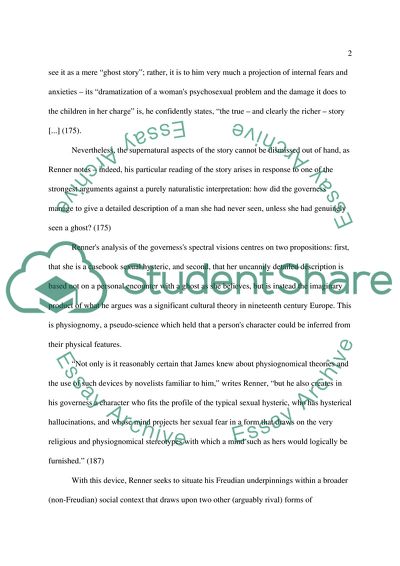Cite this document
(How Does Stanley Renner Address the Problem of Psychoanalytic Critics Research Paper, n.d.)
How Does Stanley Renner Address the Problem of Psychoanalytic Critics Research Paper. Retrieved from https://studentshare.org/psychology/1549085-how-does-stanley-renner-address-the-problem-of-psychoanalytic-critics-tending-to-privilege-the-individual-psycho-drama-of-the-author-or-characters-over-analysis-of-the-novels-cultural-context-and-dramatization-of-social-conflict-in-his-essay
How Does Stanley Renner Address the Problem of Psychoanalytic Critics Research Paper. Retrieved from https://studentshare.org/psychology/1549085-how-does-stanley-renner-address-the-problem-of-psychoanalytic-critics-tending-to-privilege-the-individual-psycho-drama-of-the-author-or-characters-over-analysis-of-the-novels-cultural-context-and-dramatization-of-social-conflict-in-his-essay
(How Does Stanley Renner Address the Problem of Psychoanalytic Critics Research Paper)
How Does Stanley Renner Address the Problem of Psychoanalytic Critics Research Paper. https://studentshare.org/psychology/1549085-how-does-stanley-renner-address-the-problem-of-psychoanalytic-critics-tending-to-privilege-the-individual-psycho-drama-of-the-author-or-characters-over-analysis-of-the-novels-cultural-context-and-dramatization-of-social-conflict-in-his-essay.
How Does Stanley Renner Address the Problem of Psychoanalytic Critics Research Paper. https://studentshare.org/psychology/1549085-how-does-stanley-renner-address-the-problem-of-psychoanalytic-critics-tending-to-privilege-the-individual-psycho-drama-of-the-author-or-characters-over-analysis-of-the-novels-cultural-context-and-dramatization-of-social-conflict-in-his-essay.
“How Does Stanley Renner Address the Problem of Psychoanalytic Critics Research Paper”, n.d. https://studentshare.org/psychology/1549085-how-does-stanley-renner-address-the-problem-of-psychoanalytic-critics-tending-to-privilege-the-individual-psycho-drama-of-the-author-or-characters-over-analysis-of-the-novels-cultural-context-and-dramatization-of-social-conflict-in-his-essay.


